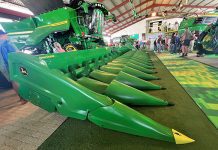Your level of AMBITION, as well as how strongly your desire for success and recognition is connected to your ego, apparently determines the direction you take when pursuing a hobby. Sports therapists teach us that there is nothing wrong with healthy ambition and aim to turn us into super-achievers and role models of a society that sees defeat as a weakness and mediocrity as a lack of ambition and brains. Most of us pigeon fanciers just enjoy keeping racing pigeons because we are fascinated by their homing ability, their determination and the way in which they bond with us and settle in a coop in our backyards, becoming part of our families and lives. But keeping pigeons is an expensive hobby and if you are not going to participate in competitions to gain return on your investment, you will be filling the pockets of highly competitive fanciers who demand a cash pay-out with the winning handshake. And so they and their champion pigeons lead and the rest follow.
Society dictates that if you own a dog or cat, it is expected to have a pedigree; likewise your parrot must be an exotic breed that is as articulate as a human being. A friend of a friend owns a parrot that speaks 123 words and is trilingual! Hence leaders and followers have different social habits – the one naturally leads and the other submissively follows. This may come as a surprise to readers, but racing pigeons are exactly the same.
‘Negative’ recognition of a leader
To fly back to their loft during a race, champion racing pigeons are driven by hunger, the love for their mate and owner and a fear of the unknown. But jealousy is one of the strongest driving forces that can turn an ordinary champion into a supreme champion. Submissive racing pigeons are the first ones to stray from the lofts simply because they are unhappy with the social environment there – they do better than humans as they don’t submit to bullies for the sake of fake unity. Champion pigeons claim the best perches in the lofts, bully loft mates at the drinking fountain and at the food tray. They occupy several nesting boxes and punish trespassers by scalping them unless their owner intervenes. In the wild, it is the survival of the fittest, the most cunning and the strong. Careful observation has shown that it is not so different in the pigeon loft.
Leading racing pigeons display aggression as part of their temperament and as a natural survival instinct. However calm, well-behaved or tolerant your choice racer may otherwise appear to be, if it is going to be passive in the conveyer en-route to the liberation point during a competition, it is going to get beaten up and its spirit is going to be crushed even before it becomes airborne. Surprisingly enough, many champion pigeons are destructive, while an overly jealous pigeon may not rest well enough before a race event, stressing itself out to the point where it actually gets beaten by a good pigeon, that is, however of a lesser quality. While this scenario may be the exception to the rule, it can be avoided by not allowing an overly jealous pigeon to be kept in close view of its ‘enemy’ during the resting period prior to a race. An overly jealous pigeon may not sleep, eat and drink enough when it is most critical for it to re-fuel for an important event. The European model has invented a jealousy system of pigeon racing, which has created a breed of unnatural champions – killer racing machines!
The benefit of tolerance with followers
There is a difference between a follower and a loser. A follower finishes the course – a loser just does not care. I know of a racing pigeon that raced in the loft of a Tshwane fancier for three years without scoring a decent club position. It was considered a follower – the loft mascot. But, in its 4th year, it emerged as a four-time winner, double organisation winner and points champion pigeon. It was never a bully and it avoided being bullied, by staying out of a bully’s way. Although it developed more slowly, it became stronger. Its love for its loft and owner increased over the years, as did its ‘understanding’ of the racing system. It became more experienced and gained confidence. Its will to win did not emerge as a single factor. When it started to win, it was a natural response to its inherent qualities. Many lofts are sacrificing the benefit of bringing champions to the fore by not being patient with initial followers and waiting for them to reach their full potential. An important lesson is to promote respect and instill confidence into the followers, both in pigeon lofts and in society. Most champion lofts only boast a few winners each year and it is the followers that make up for most of the valuable points on the scoreboard. – Thomas Smit ([email protected] or call (011) 680 4778








